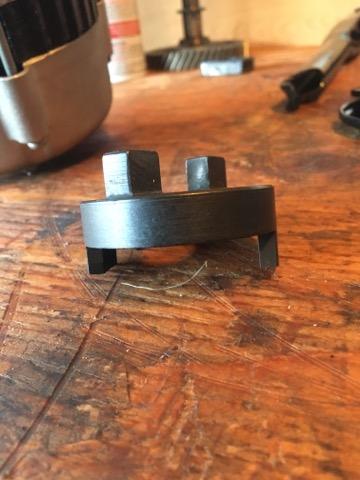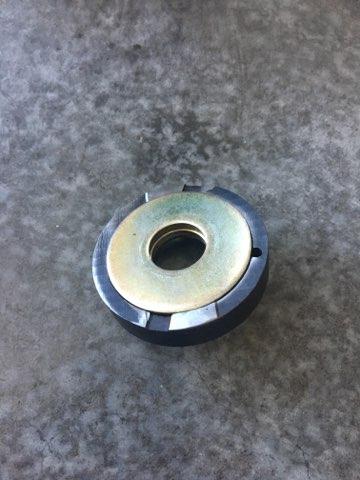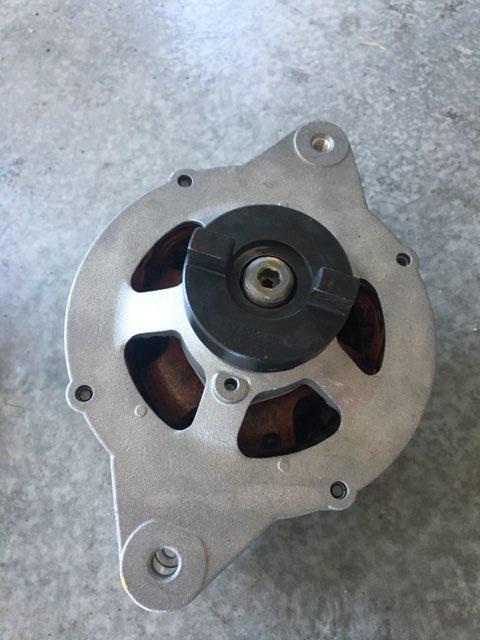






Folks, I solved my alternator
problem today. Was a rather unusual
fix, but it solved my problem for a very low price (only about $50), and I can't
be more happy about that.
Background:
2100D alternator not charging shortly after engine rebuild.
I initially suspected my voltage regulator was bad, so I tried two
different type replacements, neither of which fixed the problem.
I was getting 13.5 VDC at the positive and negative ends of the voltage
regulator, but it as soon as I hooked the ends up to the battery, the multimeter
would essentially read the battery voltage, indicating that there wasn't enough
current to charge the battery. In
addition, the battery gauge (in the
cockpit) would "barely" tick up/down when I turned the
alternator on/off.
I'm talking like 12 --> 12.1V, instead of the usual 12
--> 14V like normal. Obviously
something was wrong, so I elected to pull the rotor and stator and figure out
what was going on.
Anybody who has seen one of these old Revmaster 20 Amp
systems up close knows that there is very little room between the outer portion
of the stator and the inner portion of the rotor.
When I inspected mine, it was clear that the stator had suffered serious
heat damage over the years from rubbing up against the rotor.
Because of this, the rotor was also scuffed/scraped badly and had almost
no magnetic field left (it could barely hold a machine screw).
Basically, this alternator was toast.
Looking for a replacement, I contacted Joe Horvath at
Revmaster, who informed me that they no longer keep the 20A system for the 2100D
in stock, and that creating a new rotor would cost approximately $600. I also
contacted Great Plains to see if their 35A system would work with the 2100D, and
was told it would not.
Now I was seriously in a hurt locker; what the heck was I
going to use? It wasn't until my
wife out of all people, goes "well babe, couldn't you just use an automotive
alternator?" Initially, my first
thought was "you're crazy, that wouldn't work", but after thinking it through,
the more and more I came up with a plan, and the more and more it made sense.
Since I'm currently running an electronic ignition, and
the back of the engine is left unused, the secret was to connect the magneto
gear from my old Bendix D3000 to the alternator, then mount the alternator to
the magneto drive on the flywheel, using it to spin the alternator.
So I got to it.
The first step was simple; find an alternator.
I chose this model from O'reillys, since it was only $38, had an internal
voltage regulator, and was 60 Amps, WAY more than I'll ever need.
Believe it or not, all the
20-30 Amp alternators were in the $300-400 range, the
most absurd being
$2100 (not a misprint).
The next step was to remove the old magneto drive from
the D3000 and grind down the bottom portions of the drive gear (which were
originally meant to activate the impulse coupling).
I then bought two 5/8-inch "thick" washers from ace hardware, which fit
PERFECTLY into the drive gear for the magneto (this helped extend the magneto
drive a little further along the alternator shaft).
From here, I removed the lock nut on the alternator
(which required the use of an impact wrench), removed the fan on the alternator,
then from the bottom up installed the two thick 5/8" washers, the magneto drive
gear, then tightened everything down with the lock nut. After tightening the
bolt, I installed the magneto drive cushions, and the metal plate, completing
the entire assembly.
The last step is simple, but time consuming.
I took the alternator, aligned the magneto drive, and seated it into the
engine. From here I made two marks
with a permanent marker in the flywheel flange to drill and tap some holes for
mounting. Afterwards, I simply
installed some bolts to mount the alternator, wired the alternator battery leads
with some 10 gauge wire, and installed a 12V "exciter" wire to the alternator
(replicating the 12V ignition wire in an automobile, basically to turn on the
alternator).
I held my breath and started the engine.
Miraculously, it actually worked.
As soon as I activated the exciter wire, the alternator kicked in and the
voltage jumped up from 12V to about 13.5V at idle, and then up to 15.5V at
speed! I initially thought the
internal regulator was broken, because 15.5V nearly maxes out my battery gauge,
but I verified this with a multimeter and the voltage held steady at 15.5V from
about 1500-3200 RPM (full power).
Despite this taking care of my alternator problem, and
providing up to a massive 60 Amps of power, it does have some disadvantages.
1. Weight -
for starters, this unit weighs a lot more than the old stator/rotor unit for the
20A system. I probably lost 7-8 lbs
of useful load, going onto my already nose heavy KR2S.
Not a huge deal, but it should be noted.
2. Uses the
magneto drive - The 2100D only has one magneto drive, so if you are running any
type of magneto, obviously this solution will not work.
3. Takes
some engine power - As soon as I activated the alternator (turn on the exciter
wire), you can literally feel the engine bog down a little bit.
I can't get a real accurate measurement since my SDS ignition only
measures in increments of 100, but you probably lose 50-75 RPM at idle when the
alternator kicks in. That said, I
guarantee it is more smooth than the old clunky 20A rotor literally rubbing up
against the stator. With this new
setup, I still managed to get 3200 RPM static, and it's a toss up which system
takes more power to operate. However
since my static RPM is basically unchanged, and this alternator can provide much
more power, so far I am impressed with it.
The goods are pretty self explanatory; a heavy duty, 60A
alternator installed in your plane with no need for an external voltage
regulator.
This would be very good if you run a lot of electrical
equipment, such as landing lights, engine management units, Ipads, Garmin GPS's,
etc. For me, I only run about 15
Amps at a maximum and just needed a quick fix, and believe it or not, this
seemed like the best option. For
nearly $50, I had a brand new alternator.
I realize this article was pretty rough and dirty
(finished it at 1am) and that 99% of you will probably never need/never be able
to use this fix (since you're probably running a magneto).
That said, I did take pictures if anybody is interested in seeing them.
Now that this is finished, I can quit slacking and focus
on the Technical Report for the Electric KR2S.
V/R
Sam Spanovich
N6399U
74S, Anacortes WA
I removed the fan, because it wouldn't quite fit into the magneto housing with
the fan still attached to the alternator. This alternator was designed for
tractor applications, which doesn't produce a lot of cooling ram air from a fan
like how an automobile fan does or an airplane propeller for that matter.
Because there is a lot more cooling air available in this application, I felt
comfortable removing it.
As of now, I don't have a safety mechanism built in. If the alternator were to
fail such as seize up, it would likely destroy the magneto drive unit causing
some debris to get into the flywheel, but hopefully the engine would keep
spinning. The alternator isn't super heavy duty, so I don't think it in
itself could cause it he whole engine to seize.






